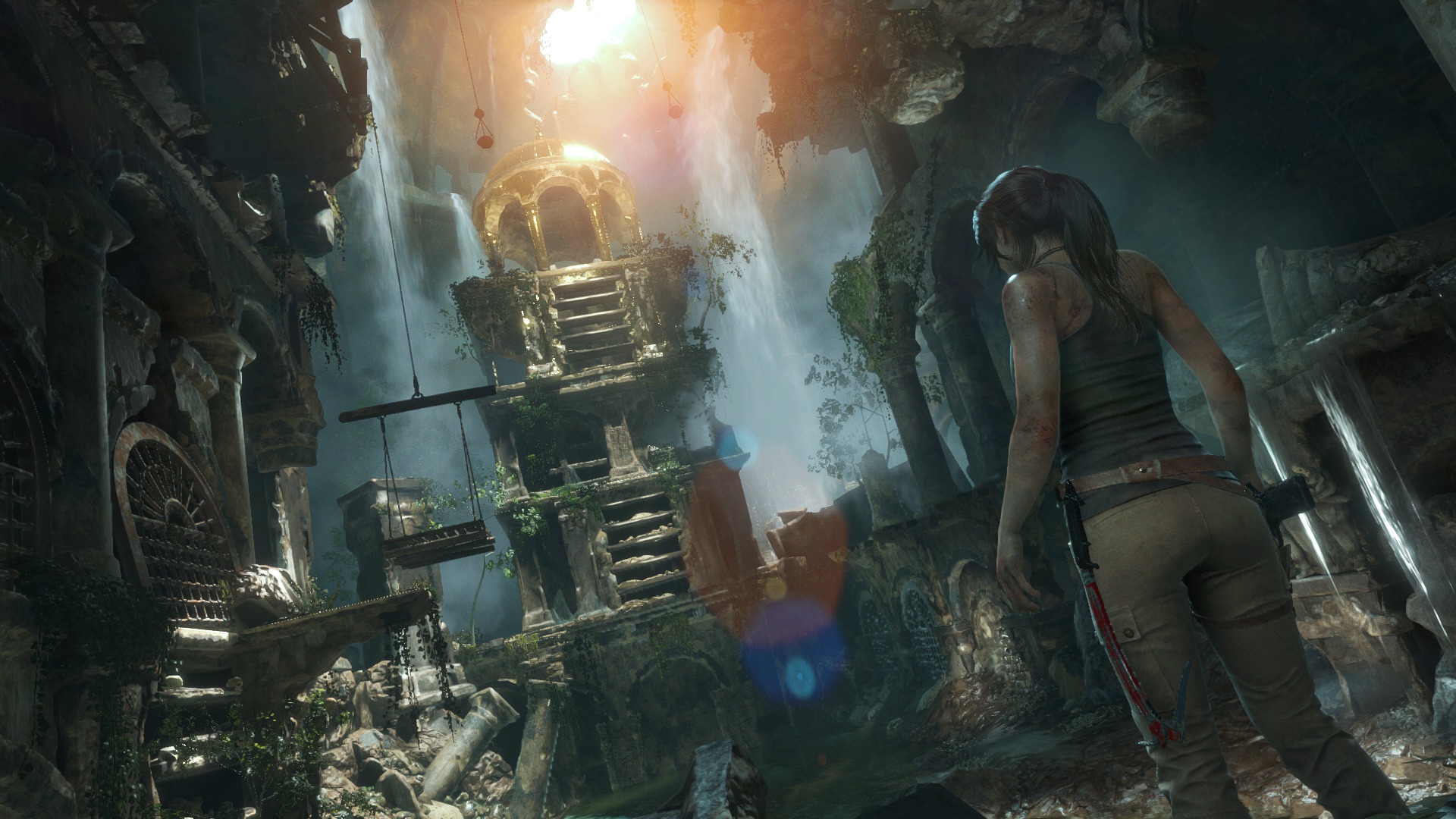Tomb Raider in virtual reality is not what you'd expect it to be
Step into Lara's boots

When Tomb Raider was first released 20 years ago, I'm sure very few of us ever imagined stepping into the boots of Lara Croft and exploring Croft Manor. Many of us wouldn't even have wanted to.
Yet that's exactly what I did recently thanks to PlayStation VR.
When the Tomb Raider franchise was rebooted in 2013, the character of Lara was modernised. Though undeniably identifiable as the same Lara from the original 1996 game, she became more real. Not just in terms of visual design but also in terms of personality.
A new chapter
A real effort has been made to make Lara a more human protagonist and that effort yields great results in the series' latest instalment, Rise of the Tomb Raider. Lara is still the same ass-kicking heroine she always was, but she feels less invincible. We see her physical and personal fallibilities. We see that she's brave, but we also see her afraid because arguably you can't have strengths without weaknesses.
In the 20th Anniversary release of Rise of the Tomb Raider, we really get to see how rounded Lara and the Tomb Raider franchise have become thanks to a couple of new side stories.
Tomb Raider is a game series that appeals to gamers who love combat and those that love an involving narrative with an interesting protagonist. Loving both of these elements of a game isn't necessarily mutually exclusive and the new story additions, called Lara's Nightmare and Blood Ties, show this.
The Lara's Nightmare story is more combat-focussed, taking place in a dark and foreboding Croft Manor that's crawling with frightening zombies. In this story we see Lara's fears as well as her physical and mental strength but mostly it's just full on combat.
Sign up for breaking news, reviews, opinion, top tech deals, and more.
On the flip-side, you have Blood Ties. Blood Ties also takes place in Croft Manor but the atmosphere is notably warmer. Here there are no enemies to kill; instead, there are puzzles to solve and the Croft family history to delve into. We find out more about Lara, her family, and how she's become the character she is today.
Playing Lara's Nightmare and Blood Ties made me really appreciate the storytelling and gameplay elements that come together to make the Tomb Raider franchise as successful as it is, and how well the balance has been struck between them.
Since such an effort has been made to build Lara up as an ass-kicking heroine with depth and underline it with these extra chapters, the decision to also add a virtual reality side game struck me as odd.
I am the Tomb Raider
The main reason for this is that when playing Tomb Raider in virtual reality you step into Lara's boots and see the game world through her eyes.
Suddenly, the game's iconic protagonist is gone and you're in her place – you're aware that you are Lara since she continues to think out loud, but not being able to see her character makes her input and your presence feel somehow equally intrusive.
Becoming Lara places you in a kind of game world limbo where you've been brought into the game but you can't make a connection with it in the same way you can when you're experiencing it via a visible Lara.
This is particularly noticeable as the chapter you play in VR is Blood Ties, the character development-heavy, zero-combat side story that you can also play without a headset.
In Blood Ties you're uncovering secrets that are significant because they mean something to Lara, but they don't have quite the same emotional impact when she's not completely there because you've taken over her like some kind of warg.
It's not particularly disappointing that there's no separate story just for VR – there's plenty to see and do in the level and even if you play it once, it's always worth going back again in the headset to scour the area in first person just in case you missed anything.
Where's Lara?
What's odd is that by making only Blood Ties VR compatible, there's a sense that you're not really getting the full Tomb Raider experience. Not only do you lose the impact of Lara as a presence, you don't really get to take part in any of that visceral tomb raiding combat either.
Blood Ties VR is a great novelty, certainly, and exploring Croft Manor whilst wearing the PSVR headset is pretty awe-inspiring. But it doesn't suggest that the Tomb Raider franchise as it is now would be improved by a longer VR experience.
What it did suggest to me, though, was that VR could be a good platform on which the narrative-driven point-and-click genre could thrive.
Stripping back the Tomb Raider title and all of the expectations and preconceptions that come with it, I greatly enjoyed Blood Ties VR as a puzzle-solving environmental experience.
With a fresh narrative in a brand new game world being able to explore in first person, interacting with the environment to solve puzzles, and feeling like you're forging a story of your own could make for a truly unforgettable gaming experience.
As it is, playing Tomb Raider in VR really hammers home just how far this series has come in its 20 year lifespan. Though the side chapters don't actually seem to add anything to Rise of the Tomb Raider's main storyline, for fans of the franchise they're likely to be a valuable addition nonetheless.

Emma Boyle is TechRadar’s ex-Gaming Editor, and is now a content developer and freelance journalist. She has written for magazines and websites including T3, Stuff and The Independent. Emma currently works as a Content Developer in Edinburgh.